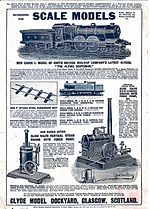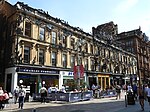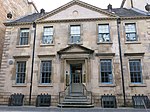St. Enoch Centre

The St. Enoch Centre is a shopping mall located in the city centre of Glasgow, Scotland. The centre is located adjacent to St Enoch Square. The Architects were the GMW Architects. The construction, undertaken by Sir Robert McAlpine, began in 1986, and the building was opened to the public on 25 May 1989. It was officially opened by the then-Prime Minister Margaret Thatcher, in February of the following year.Located on the site of the former St Enoch Station, the building is just off Glasgow's famous shopping thoroughfare, Argyle Street and overlooks the historic St. Enoch Square and the original subway station building. The present St Enoch subway station is accessible by escalators. Whilst the target of many architectural critics, the building is notable for its massive glass roof, which makes it the largest glass-covered enclosed area in Europe. Not only does this substantially reduce heating and lighting loads – the mall area is lit entirely by natural daylight in summer, whilst the solar heat generated by the roof means that mechanical heating is only required for a week on average per year – it also earned the building its affectionate nickname "The Glasgow Greenhouse". The roof's steel framework was fabricated by the shipbuilders Scott Lithgow.The glass roofed element surrounds a seven-storey car park, and when originally opened, an ice rink. This was closed in 1999 when a refurbishment programme (initiated to compete with the newer Buchanan Galleries complex), saw it being replaced by more shops and an enlarged restaurant area.
Excerpt from the Wikipedia article St. Enoch Centre (License: CC BY-SA 3.0, Authors, Images).St. Enoch Centre
Argyle Street, Glasgow Merchant City
Geographical coordinates (GPS) Address External links Nearby Places Show on map
Geographical coordinates (GPS)
| Latitude | Longitude |
|---|---|
| N 55.85678 ° | E -4.25301 ° |
Address
St Enoch Shopping Centre
Argyle Street
G2 8BJ Glasgow, Merchant City
Scotland, United Kingdom
Open on Google Maps







